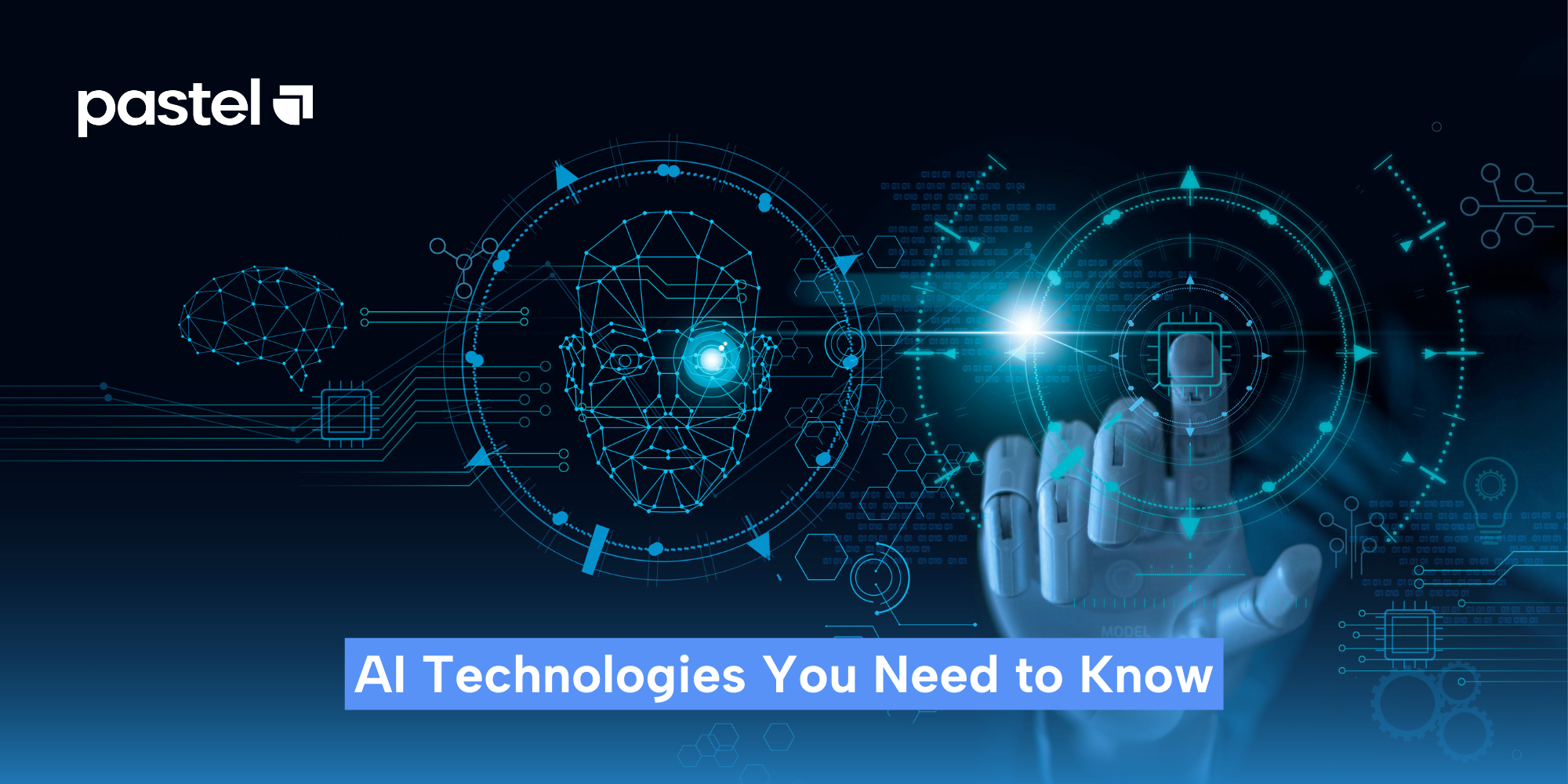
Introduction: What is AI and How Does it Work?
In the continually-evolving technology landscape of 2023, the term "artificial intelligence" (AI) resonates more profoundly than ever. According to a recent report from Grand View Research, AI’s projected annual growth rate of 37.3% between 2023 and 2030 emphasizes AI's transformative potential across diverse sectors. Despite this momentum, there remains a need for organizations to understand the manifold ways in which AI can reshape their operations— far beyond just its generative capabilities.
At the core, artificial intelligence is a near emulation of human intelligence through intricate algorithms and machine learning models. Artificial intelligence technology works by harnessing the power of large datasets, which make up the knowledge on which it is trained upon. The system then analyzes such data to uncover patterns. These patterns then serve as the foundation for making predictions about future scenarios, automating tasks with human-like precision, and even replicating cognitive functions. As the capabilities of this technology continue to expand, it wields the potential to reshape entire industries, redefine human-machine collaboration, and catalyze innovation on an unparalleled scale.
In this blogpost, we’ll delve into some of the branches of artificial intelligence (AI) which you may (or may not) have heard about.
The Evolution of Artificial Intelligence (AI) Over the Decades
The journey of artificial intelligence (AI) technology from science fiction to reality is a remarkable narrative that spans decades. It all began in the first half of the 20th century when science fiction films like "Wizard of Oz" and "Metropolis" introduced the concept of robots that could mimic human behavior. While these early portrayals were more fiction than reality, they sowed the seeds of curiosity that would later shape the trajectory of the development of artificial intelligence (AI).
The history of AI is linked to the works of the visionary Alan Turing, a British polymath who, in the mid-20th century, explored the mathematical possibility of machines using available information, logic, and reasoning to solve complex problems and make decisions. It was on this basis that he came up with his paper titled; Computing Machinery and Intelligence in the year 1950. However, the limited state of computing technology at that time hindered his ability to fully realize his concepts at the time.
In a pivotal turn of events, the 1956 Dartmouth Conference convened a group of pioneering scientists to deliberate the potential of artificial intelligence, and it was there that the term "AI" was coined. In the subsequent years, the efforts of researchers like Allen Newell, Cliff Shaw, and Herbert Simon led to the development of early AI programs such as the Logic Theorist and the General Problem Solver. Despite these milestones, progress remained slow, and funding for AI research was limited.
The 1980s marked a resurgence for AI, with the development of expert systems and the emergence of machine learning. The 1990s then ushered in the era of neural networks, with deep learning algorithms gaining prominence. As we moved into the 21st century, the development of AI continued at an unprecedented pace that has so far been marked by breakthroughs including computer vision and natural language processing. This trajectory led us to the present day where the year 2023 witnesses the emergence of transformative generative AI models like the GPT-4, which can comprehend, create, and emulate human-like text with astounding accuracy.
Key Artificial Intelligence (AI) Technologies to Know:
As we delve further into the landscape of AI technology, it's important to note that its applications extend far beyond its generative capabilities. At this point, we will explore some of the fundamental branches of AI technology that have significantly shaped the technological landscape:
• Deep Learning:
Deep learning is a subset of machine learning that involves training a neural network, a collection of nodes, to each independently learn from input variables and produce outputs through an iterative process. This concept is similar to how neurons in the human brain function. In practical terms, deep learning models are able to learn through observations from the datasets it is taught on, performing tasks such as recognizing patterns in such forms of data, and then building upon these learning processes to refine their output. It is a model of AI commonly used to help computers recognize patterns from very complex and large datasets such as texts, audio, and photos, to then produce an output. Deep learning works with multiple layers of neural networks that are designed to mimic the way the human brain processes and learns new information enabling the computer system to make accurate predictions and even classifications based on patterns.
While the concept of deep learning has been around for some time, it was initially limited by the computing power available. However, since the 1990s, advances in computing speed and access to extensive datasets have propelled deep learning into one of the most prominent fields within machine learning and artificial intelligence. These advancements have played a pivotal role in recent progress in areas such as natural language processing, computer vision, audio analysis, speech recognition, recommendation systems, and more.
In the financial sector, neural networks and deep learning have introduced a paradigm shift in various aspects. Their capabilities range from being able to detect fraud and assess credit risk to making predictions on the stock market. For instance, neural networks can analyze large datasets to identify anomalies and potential fraudulent transactions, thereby enhancing security of financial transactions for banks. A notable example of the use of deep learning in finance can be seen in the case of how Danske bank—Denmark’s largest bank—leveraged deep learning technology for fraud detection and was able to improve the accuracy of fraud detection by 50% and reduce false positives by 60%.
• Natural language processing (NLP):
Natural language processing (NLP) is a branch of AI that focuses on enabling computers to understand, interpret, and respond to human language. This technology empowers machines to process and comprehend human speech and text in order to enable seamless communication between humans and computers. The relevance of NLP technology in financial services is profound. From chatbots that offer customer support to sentiment analysis of market news, NLP entirely transforms how financial institutions interact with clients and analyze market trends. Its adoption within the financial services sector has been mostly driven by the increasing demand for automated and efficient financial services on a global scale.
A compelling case in point showcasing the advantages of NLP technology is shown in a report highlighting the impact of Bank of America’s NLP-based chatbot—Erica. This technology has played a pivotal role in reducing the bank's customer service costs by a remarkable 19%. Such outcomes evidently underscore the tangible benefits that NLP technology offers in enhancing operational efficiency and cost-effectiveness within the financial services industry.
• Computer Vision:
Computer vision is an aspect of artificial intelligence that enables computer systems to see, recognize and process images from the world, much like humans do. The primary objective of computer vision is to understand the content of digital images, such as people, animals, or objects. This involves the development of algorithms and models that allow machines to process and analyze visual data to solve problems and make decisions. Computer vision technology empowers computer systems to perform tasks like image recognition, object detection, and facial recognition, among others. In essence, computer vision operates by acquiring an image, processing it, and understanding its content.
In the financial services sector, computer vision has several applications. For example, Ant Financial, a leading Chinese fintech company, employs computer vision technology within their app to streamline vehicle damage assessment and expedite the claims process. This approach involves analyzing images uploaded by drivers. Subsequently, a comprehensive report is generated and sent to human insurance agents. Through the integration of computer vision, the Ant Financial app can accurately identify damaged car components, assess necessary repairs, and even evaluate the impact of the incident on the driver's insurance premium. Furthermore, computer vision is also relevant for tasks such as automating document processing, where invoices and statements are scanned and analyzed to extract relevant financial data. This streamlines tedious manual processes, reduces human error, and ultimately enhances operational efficiency for financial service companies. Moreover, computer vision plays a role in surveillance and security, improving fraud detection by identifying unusual patterns and behaviors in real-time, whether at ATMs or during online transactions. This technology not only accelerates decision-making but also enhances the accuracy and reliability of crucial financial processes.
Concluding Thoughts
In the span of decades, the journey of artificial intelligence (AI) has transformed from the realms of science fiction to tangible reality. The evolution of AI technologies showcases the remarkable strides we've taken—from natural language processing (NLP) facilitating seamless human-computer interaction to the power of deep learning in data interpretation and predicting outcomes. Alongside these, computer vision has enabled computer systems to perceive the visual world thereby streamlining and optimizing operations across various sectors.
Beyond its generative capabilities, AI has fundamentally reshaped how industries function. The relevance of AI is no longer confined to fiction; it's now a driving force that propels operational efficiency. According to Business Insider, AI applications are projected to save banks around $447 billion by 2023, with substantial gains in both cost reduction and revenue increase. A report by TCS Research reinforces this and reveals that AI investments lead to a 13% reduction in production costs and a notable 17% increase in average revenue.
The path from imagination to realization has seen artificial intelligence metamorphose into a powerful tool that enhances processes, decisions, and outcomes across diverse industries. As this technology continues to unfold and unlock endless possibilities, it reinforces the potential of AI to reshape the landscape of the financial industry and beyond.

